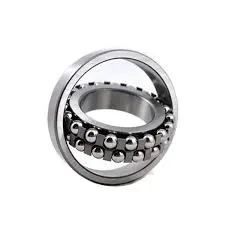
Dec . 07, 2024 15:10 Back to list
imperial thrust bearings
Understanding Imperial Thrust Bearings Design, Function, and Applications
Thrust bearings are critical components in various machinery, enabling the transfer of axial loads while minimizing friction and wear. Among the myriad types of thrust bearings available, imperial thrust bearings stand out due to their specific designs tailored to meet the standards of imperial measurement systems. This article delves into the structure, functionality, and applications of imperial thrust bearings.
What Are Imperial Thrust Bearings?
Imperial thrust bearings are designed to support axial loads in machines while allowing for limited radial movement. The term “imperial” refers to the measurement system that originated from the British Empire. This system uses units such as inches and pounds, which are often preferred in specific industrial applications, particularly in the United States. As such, imperial thrust bearings are characterized by their dimensions and tolerances which adhere to these measurements.
The design of imperial thrust bearings can vary, including ball thrust bearings, plain thrust bearings, and roller thrust bearings. Each type caters to different load capacities and operational conditions, making them versatile in their applications.
Design Considerations
The design of imperial thrust bearings necessitates careful consideration to ensure optimal performance and longevity. Key design elements include
1. Material Selection The materials used for thrust bearings are crucial, as they need to withstand high loads and minimize wear. Common materials include steel, bronze, and composite materials, each offering unique benefits in terms of strength, resistance to corrosion, and thermal stability.
2. Lubrication Proper lubrication is essential in thrust bearing systems to reduce friction and wear. Options for lubrication include grease, oil, and sometimes dry lubrication techniques. The choice of lubricant depends on the operating environment, temperature, and speed of operation.
3. Clearance Adequate clearance between the bearing elements is necessary to allow for thermal expansion and to accommodate any misalignment that might occur during operation. This clearance must be carefully calculated according to the specific application and load requirements.
4. Load Capacity The bearing must be designed to handle not just the static load but also dynamic loads that occur during operation. Using the correct sizing and design increases the reliability and performance of the thrust bearing.
imperial thrust bearings

Functionality
The primary function of imperial thrust bearings is to support axial loads while allowing for rotational movement of the shaft. They achieve this by distributing the load across a larger surface area, thereby reducing localized stress and potential failure points. Depending on the type, thrust bearings can accommodate varying degrees of axial displacement, which is critical in applications where misalignment might occur.
One fundamental aspect of their operation is their ability to provide a smooth interface between moving parts. This is essential in machinery where precise motion is necessary, such as in turbines, automotive gear systems, and industrial compressors.
Applications
Imperial thrust bearings find applications across a broad range of industries, highlighting their versatility and importance. Some common applications include
- Machinery In various industrial machines, thrust bearings help support heavy rotary equipment, ensuring that they function smoothly under high loads. - Automotive In vehicles, thrust bearings are used in transmissions and other drivetrain components, where they manage axial loads that arise from gear interactions.
- Aerospace The need for lightweight and robust thrust bearings is critical in aerospace applications. They are used in engines and various rotating components.
- Power Generation In turbines and generators, thrust bearings are integral to maintaining alignment and supporting the weights of rotor components.
Conclusion
In conclusion, imperial thrust bearings are indispensable components in many mechanical systems. Their design, capable of handling axial loads efficiently while minimizing friction, ensures the smooth operation of various machinery across multiple industries. With the continued development of materials and lubrication technologies, the efficacy and reliability of thrust bearings will only improve, solidifying their role in modern engineering solutions. Understanding the specifications and applications of these bearings is crucial for engineers and designers alike, as they strive to enhance the performance and durability of their systems.
Latest news
-
Premium Deep Groove Ball Bearings | High Speed & Reliability
NewsAug.29,2025
-
Durable Scaffolding Clamps - Secure & Reliable Tube Connectors
NewsAug.28,2025
-
Common Failures in Thrust Ball Bearings and Solutions
NewsAug.22,2025
-
How Tapered Roller Bearings Can Take Shock Loads
NewsAug.22,2025
-
Angular Bearings in High-Precision Spindles
NewsAug.22,2025
-
The Impact of Misalignment on Cylindrical Roller Bearing Performance
NewsAug.22,2025
